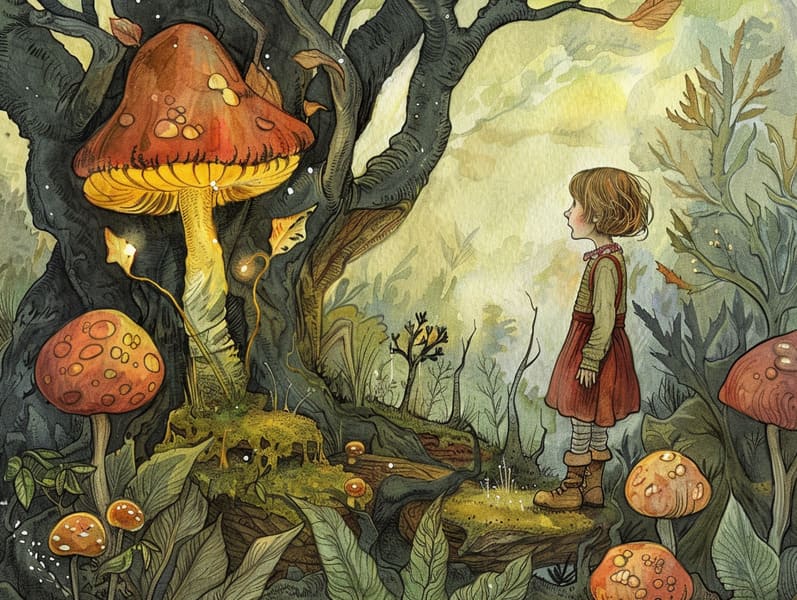Exploring the Roots of Short Fairy Tales and Their Unchanging Magic.
Exploring the Roots of Short Fairy Tales and Their Unchanging Magic.
Blog Article

Children's fairy tales have timeless appeal. These narratives have been transmitted from one generation to the next far before they were ever recorded. They emerged from a variety of backgrounds, including African traditions. They were initially disseminated among elders, often carrying themes and messages relevant to the societal norms and beliefs of the time.
The famous Grimm duo, Jacob and Wilhelm (the Grimm brothers), were among the first to gather and publish many of these beloved fairy tales. Their compilation, "Grimm's Fairy Tales," included stories like "Cinderella," "The Bread Crumb Trail," and "Snow-White and Rose-Red," which have since become staples in the world of traditional fairy tales. Similarly, Andersen's delightful tales, such as "The Mermaid's Tale," and "The Story of the Ugly Duckling," have touched hearts worldwide, ensuring their place in the pantheon of timeless fairy tales.
Even though they are old, classic fairy tales remain as applicable as ever, especially as children's bedtime stories. These delightful tales are now available in diverse formats, including gorgeously illustrated books, magical animations, and online fairy tales.
Their unwavering allure can be ascribed to several delightful features:
Significant Morals: Old fairy tales often provide important moral lessons. Stories like "The Shepherd Boy and the Wolf" teach the benefit of integrity, while "The Tortoise and the Hare" exemplify the virtues of steadfastness and meekness. These tales offer young readers clear distinctions between truth and falsehood, helping to shape their moral compass in a subtle yet impactful way.
Warmth and Understanding: Ancient fairy tales frequently feature beings facing obstacles and hardships, motivating kids to identify with their struggles and applaud their triumphs. For instance, "Beauty's Beast" conveys the virtue of seeing beyond looks to know the real person of a being, developing warmth and perception.
Cultural Appreciation: Many traditional fairy tales are infused with the cultural contexts from which they were born. Reading these narratives can provide enlightening views into different heritages, cultivating a sense of global appreciation and recognition.
Creativity and Imagination: The supernatural elements in traditional fairy tales—wizardry and magic—stimulate children’s creative dreams. These narratives carry readers to mythical realms, engendering imaginative thinking and a sense of mystery that endures a lifetime.
Classic fairy tales are not only bewitching but also illuminating. They work as charming tools in advancing various cognitive and emotional skills in young readers. When traditional fairy tales are spoken, they nurture speech website development by bringing new terms and detailed sentence structures. This practice also promotes auditory skills and attention, as young readers listen intently, anticipating to see what happens next.
Furthermore, reflecting on the themes and characters of old fairy tales can advance thinking skills and thought processes. Young readers are taught to see patterns, expect results, and grasp cause and effect. These debates also encourage kids voice their thoughts and feelings, boosting their emotional intelligence.
In today’s technological age, the proliferation of digital storybooks has made these stories more acquirable than ever. Web-based platforms and mobile apps provide ample collections of timeless fairy tales that can be looked at or listened on anytime, anywhere. Fairy tales voiced are particularly common, sharing an interactive method for kids to engage with these fascinating tales. Sound books and read-out-loud videos move characters and settings to life, often complemented by mesmerizing soundtracks and musical scores that intensify the tale journey.
The timeless appeal of timeless fairy tales lies in their ability to modify to today's society while staying true to their underlying messages. Contemporary retellings of these stories often introduce more representative figures and modern settings, making them familiar to today’s audience. However, the key lessons of gallantry, kindheartedness, and even-handedness remain unchanged, continuing to resonate with young listeners of all ages.
Old fairy tales also offer a sense of warmth and comprehensibility. They showcase a well-arranged narrative with a obvious beginning, middle, and end, often wrapping up with the termination of conflicts and the triumph of good over bad. This dependability can be solacing for the young, sharing a sense of reliability in an fluctuating world.
Ancient fairy tales continue to delight and enlighten new generations, maintaining their wonder and meaningfulness in modern society. As nighttime stories for kids, they afford a perfect blend of allure and teaching, facilitating moral values, empathy, and creativity. The abundance of online fairy tales and the widespread nature of fairy tales read aloud affirm that these ancient stories remain obtainable to new generations.
By guarding and disseminating these fairy tales, we continue to laud the rich tapestry of human imagination and cultural heritage. Whether you are perusing a richly illustrated book, enjoying a virtual library, or hearing an read-aloud book, the elegance of bedtime fairy tales is always within reach. These stories demonstrate of the perpetual impact of narratives and its ability to unite us across eras and regions.
Regardless if you are enjoying a richly illustrated book, exploring a electronic library, or listening on an read-aloud book, the magic of Grimm's fairy tales is always within reach.
These narratives illustrate of the eternal ability of storytelling and its ability to tie us across centuries and lands, weaving a spell that enchants and educates alike.